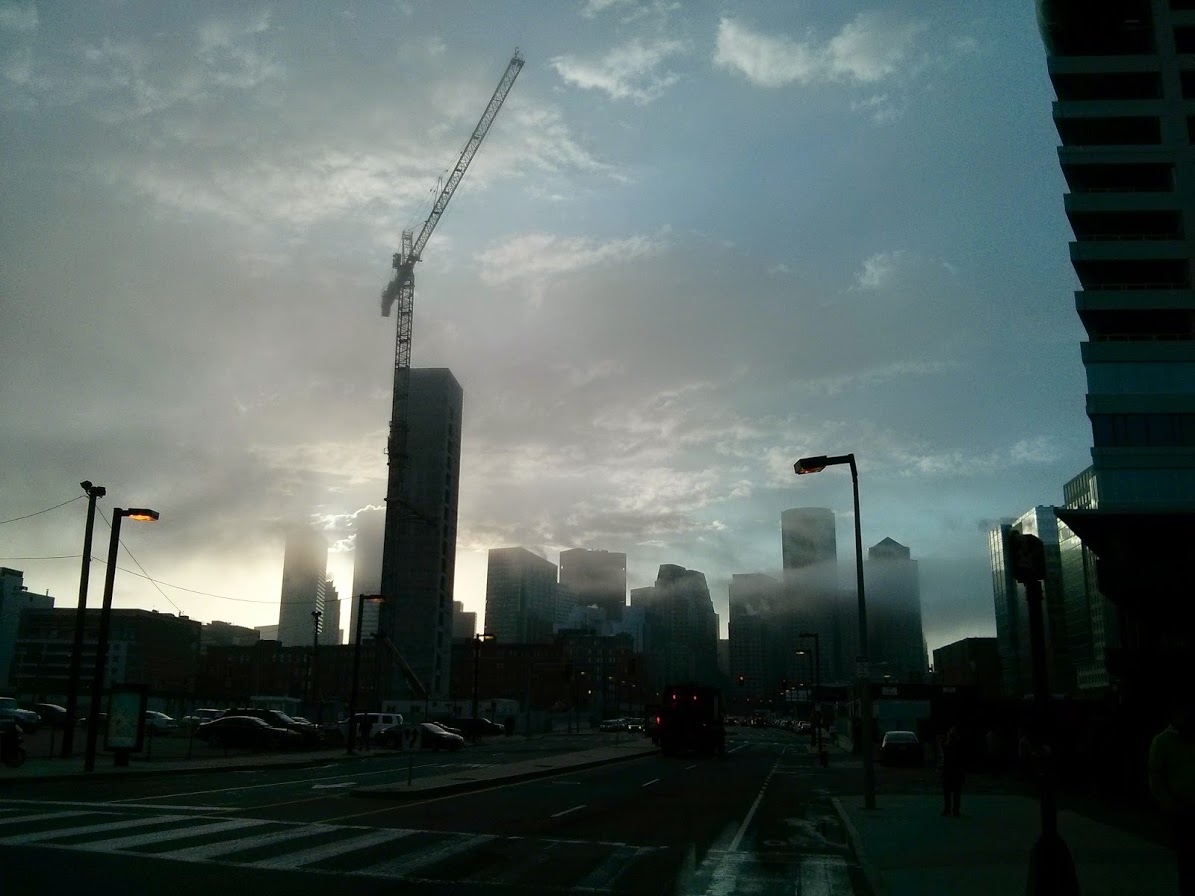 |
| Songdo City (source: Jean Chung for the Boston Globe) |
Hynes had been courted by the South Korean government to build a massive city from scratch, one of the world’s largest private real estate projects, with 60-story housing complexes, a park, a waterfront golf course designed by Jack Nicklaus, and amenities modeled after major cities around the world, including Boston.If I had a nickel for every time an architect or a planner thought that they could inspire urban vitality by building yet another "wide boulevard" then I could probably afford to build my own Songdo City. Not that I would, because it looks awful, and the Koreans seem determined to repeat every mistake possible. However, I want to focus on a particular recurring theme, right now: it seems to me that almost every architect out there gets this idea that if they replicate Parisian boulevards then they will magically create another Paris!
Some 100 million square footage would be built, the equivalent of 83 Prudential Towers in Boston.
“I think we have an opportunity here to have a lot of fun,” he told his partner after viewing the wasteland. “Build a lot of buildings.”
New Songdo City, as the development is called, hasn’t yet turned out the way Hynes and his business partners envisioned, and he left the project four years ago. It currently feels more like a small Midwestern city than a giant international hub, with wide boulevards and newly planted trees but little hustle and bustle.
Reading further in the same article:
The city was planned to be about the size of downtown Boston, and the vision was grand: A wide boulevard would be like the Champs-Elysees in Paris, an opera house like the one in Sydney, and canals that would take a visitor to Venice......................
 |
| A statue in Paris, which I hereby designate to be known as, "The patron saint of stupid architects who try to build Parisian-style boulevards everywhere." |
You would think that by 2014, most people in the urban developing profession would have realized their mistakes from the 1950s, 1960s, 1970s, 1980s, 1990s and 2000s. Alas.
His focus now is Seaport Square, a development that aims to transform 23 acres of parking lots into a neighborhood with condominiums, offices, stores, and parks. All told, Hynes hopes to help build 20 projects totaling 6.3 million square feet. Construction will have started on about a third of the development by June and Hynes is aiming to finish by 2020, meaning his new project in the Seaport would be finished the same year as his old one in Songdo City.Think he learned anything about Wide Boulevard Syndrome? I doubt it. The newer parts of the Seaport suffers from it just as badly as anywhere. Take a look at Northern Ave, Seaport Boulevard, Congress Street, and Summer Street.
View Larger Map
Things aren't any better on the ground, either.
And when combined with the utter failure that is Silver Line-Waterfront, is it any wonder that Downtown Crossing is so much more desirable for new businesses and general street life?
It's okay to make mistakes. It's not okay to make the same mistakes over and over and over again. When will planners learn? It's the small streets, not the big streets, that make a city great. The big streets just make people feel small.

Ground floor uses are also an essential element. Grand boulevards can work if there are shops and restaurants and other ground floor spaces that spill out onto wide sidewalks. A wide street without anything useful for pedestrians will feel especially desolate since no one will want to walk there.
ReplyDeleteAlso, lots of large trees can help to make the sidewalks and street feel more intimate and make if places along the edges of the sidewalk in addition to in the center of the street.
I don't know if either of these principles were followed in South Korea, but from the article it doesn't sound like it.
Look at Kendall Square. Where is the hustle and bustle? On Main Street—which is narrower and set to be de-boulevardized this summer (the median is coming out) and on Third Street, which has one lane in each direction. Broadway and Binney are, by comparison, wastelands. And they're not even that wide!
ReplyDeleteBroadway and Binney also have very few street-level uses. On both of them, most of the buildings are actually set back quite far from the street. The only things on Broadway are the two hotel entrances and Mead Hall. Other than that it's blank walls of office buildings...
ReplyDeleteI think it's unfortunate to use pictures that are not representative to make your point. In 5 minutes, I found 2 articles that demonstrated some skepticism and yet hope for Songdo: http://www.bbc.com/news/technology-23757738. And http://www.worldfinance.com/inward-investment/could-songdo-be-the-worlds-smartest-city.
ReplyDeleteThe Seaport District is still evolutionary and certainly not some green oasis, but the quality of the restaurants and shops is slowly coming up to par with Newbury St and will soon surpass it.
While I agree that there are no magic bullets in architecture, I fail to see how you've made your point.